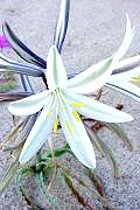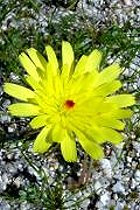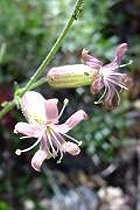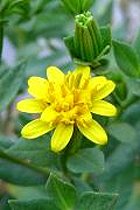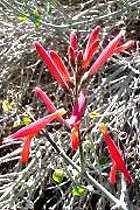-
ka'li: presumably a derivation from the word alkali, or perhaps they
both share a common derivation. This taxon was one of those that were
an important source of soda ash since its ashes contain as much as
30% of the alkali material sodium carbonate. The word alkali itself
is reported to have been derived from the Arabic al qaly, or
"from Kali," and there is a famous area of Saudi Arabia
called the Rub al-Kali or Rub al-Khali, the "Empty Quarter."
It is likely that the same kinds of alkaline plants grow there such
as Chenopodium, Salicornia, Batis as well as Salsola.
-
Kallstroe'mia: named for Swedish botanist/gardener Anders Kallström
(1733-1812), an obscure contemporary of the Italian physician and naturalist Giovanni Antonio Scopoli (1723-1788),
the author of the genus in 1777. To gain gardening experience, Kallström went to London where he was employed as a journeyman gardener at Kensington Palace, following which he went to Paris before returning to Sweden. He was associated with botanist Philip Miller at Chelsea, chief gardener at the Chelsea Physic Garden, and his letters refer to the forthcoming edition, the eighth, of Miller's Gardeners Dictionary. He also spent time in Holland.
-
Kal'mia: named for Pehr (Peter) Kalm (1716-1779), a Finnish-Swedish explorer, botanist, agricultural economist
 |
|
and student of Carl Linnaeus, considered as one of his most important disciples. He traveled extensively in Russia and then was sent by the Swedish Royal Academy of Sciences to study the botany and natural history of North America. He spent three years in New York, Pennsylvania and Canada, and wrote about it in Travels Into North America (English edition published in London 1772). After returning to Sweden, he became a professor of natural history and was elected to the Stockholm Academy of Sciences. He was born in Sweden to where his Finnish parents had fled to |
escape the Great Northern War between Sweden and a coalition of Russia, Denmark-Norway and Poland-Saxony-Lithuania. His father died soon after his birth and his mother took him back to Närpes in the Ostrobothnia region of Finland at the cessation of hostilities. He studied at the Royal Academy of Turku which was the only university in Finland at that time, and then entered the University of Uppsala, where he was one of Linnaeus’s first students and was given instruction in astronomy by Anders Celsius. From 1742 to 1746 he did field research in Sweden, Russia and the Ukraine. Linnaeus used his findings in his Flora Suecia. The following year Kalm then became a professor of economics at the Royal Academy of Turku. He had become a member of the Royal Swedish Academy of Sciences in 1745 and in 1747 he was selected to travel to North America to study its flora and bring back seeds and plants useful to agriculture. He was the first trained scientist to describe Niagara Falls and published the first scientific paper on the North American cicada. He was specifically tasked to bring back a hardy species of mulberry from which they hoped to establish a silk industry. He spent six months in England and met many English botanists, then arrived in Philadelphia in 1748 and was befriended by no less than Benjamin Franklin who introduced him to the great botanist John Bartram. In the summer of 1749 he traveled up the St. Lawrence to Quebec where he botanized, gathering many plants of potential economic importance in Sweden such as walnut, early-ripening maize, pumpkin, cotton and watermelon. He also took many barometric, meteorological and cartographic measurements along the way. After traveling around in New York state, he got married and remained in Philadelphia until 1751, when he returned to Sweden. He continued to work as a lecturer in Turku, cultivated seeds he brought back, published numerous papers in the Proceedings of the Royal Swedish Academy of Sciences, and concentrated on silviculture and forest conservation. Although the species he returned with failed ultimately to have economic significance, he had a great influence on the next generation of botanical explorers. In his Species Plantarum Linnaeus credited Kalm with 60 new species including the mountain laurel Kalmia which Linnaeus named in his honor in 1753. The genus is called variously wicky, sheepkill, mountain laurel, ivy and sand-myrtle.
-
kamtschat'icus: of or from the Kamchatka Peninsula.
-
kannenberg'ii: named for Karl Wilhelm Friedrich Kannenberg (1797-1853), a Prussian military officer, pharmacist and plant collector. He was born in Torun, Poland, learned the pharmacy trade in Graudenz, began military training in Gdansk in 1819, stayed in London from 1828 to 1831 to expand his scientific knowledge, and studied in Kiel in 1831. In 1833 he established a new pharmacy in Pelplin. All of this time he was interested in flora and became devoted to it. He found what was eventually published in 1852 by Ernst Ferdinand Klinsmann as the Botrychium kannenbergii in Pelplin. He died at Pelplin, Poland.
-
Kant'ia: named for Jacob Kant, an 18th century medical practitioner in the Hague, and/or Arcutus Kant, a doctor in Leiden. The genus Kantia was published in 1912 by Julius von Pia.
-
karvinskia'nus: named for Wilhelm Friedrich Karwinsky von Karwin (1780-1855), a 19th century Bavarian explorer and naturalist who collected plants in Brazil (1821-1826) and Mexico (1826-1831, 1840). He was born in Hungary and died in Munich. He spent five years in Mexico and sent back large numbers of living plants, particularly agaves and cacti. In 1840 he returned to Mexico at the urging of the Russian government and sent his collections to St. Petersburg. The genus Karwinskia was named for him by German botanist Joseph Gerhard Zaccarini in 1832, and his name is on many taxa.
-
kaulfuss'ii: named for Georg Friedrich Kaulfuss (1786-1830), a German botanist and professor of forestry and agriculture at Halle. He obtained his doctorate from the University of Halle in 1816 and became a full professor in 1823. He described the pteridophytes collected by Adelbert von Chamisso, and named the fern Cibotium chamissoi after him. He published more than 200 plant names, including a number of genera, and the genus Kaulfussia was named ini his honor. He was the author in 1824 of Enumeratio Filicum.
-
kear'neyi: named for Thomas Henry Kearney, Jr. (1874-1956), an American botanist and agronomist known for his
 |
|
wok on cotton and date palm breeding, plant taxonomy, and the flora of Arizona. He was born in Cincinnati, Ohio, and enrolled at the University of Tennessee in 1889. He began a 50-year career at the U.S. Department of Agriculture in 1894. In 1898 he revised the North American species of Calamagrostis, describing 23 new species or varieties. He participated in the Harriman Alaska expedition from 1899 to 1900 which included an amazing array of people such as naturalists William Brewer and John Muir, paleontologist and geographer William Dall, botanists Frederick |
Coville and William Trelease, zoologist Clinton Hart Merriam, photographer Edward Curtis, and other biologists, zoologists, entomologists, mining engineers, geographers, ornithologists, artists and writers. Wikipedia adds: “In the early 1900s Kearney traveled throughout North Africa to study crops such as dates and cotton in arid and alkali soils, and began a decades-long period of cotton-breeding research in Arizona. Kearney served as president of the Botanical Society of Washington in 1917. From 1920 to 1944 he also studied the taxonomy and distributions of plants of Arizona. A major collaborator during this period was Robert Hibbs Peebles, Kearney's junior colleague at the department, with whom Kearney published many papers on cotton genetics and plant taxonomy. The contributions of Kearney and Peebles to the science of cotton growing have been recognized as "among the most outstanding of all time." The rare, endangered Arizona plant Amsonia kearneyana (commonly known as Kearney's bluestar), was named for Kearney in 1928. The genus Kearnemalvastrum (Malvaceae), containing two species in Latin America, was posthumously named in honor of Kearney. [He] retired from the Department of Agriculture in 1944, after which he moved to San Francisco, California, and became a research associate at the California Academy of Sciences, where he continued his taxonomic studies and collaborations with Peebles. He and Peebles published the first edition of Arizona Flora in 1951, a comprehensive guide to plants of the state that remains a standard reference a half-century later. Kearney was named an honorary curator, and was the subject of biographies and tribute articles by his colleagues. He received the Certificate of Merit of the Botanical Society of America in August, 1956. Kearney died in San Francisco.” The former taxon in the California flora was Eriogonum kearneyi.
-
Keck'ia/keckia'nus/Keckiel'la/keck'ii: named for David Daniels Keck (1903-1995), an American botanist known for his work on experimental taxonomy who collaborated with Philip Munz on A California Flora in 1959. He was born in Nebraska and moved with his family to Riverside, California. His high school biology teacher was Edmund Jaeger who encouraged his early interest in botany. He received BSc and MSc degrees from Pomona College under the guidance of Philip Munz and a PhD in botany from the University of California in 1930 where he did doctoral research with Harvey Monroe Hall. He worked at the Carnegie Institution at Stanford from 1934 to 1950. In 1950 he became head curator of the New York Botanical Garden and remained in that position until 1958. Before moving to New Zealand in 1970 where he established an arboretum near his home, he was program director for systematic biology at the National Science Foundation, returning to the United States in 1978. He collected widely in the western United States, mainly in California, but also made several trips to Mexico. He died at the age of 92. The genus Keckiella was published by Richard Myron Straw in 1967 and the genus Keckia was published by Ernst Friedrich (Constantino) von Glocker in 1841.
-
keil'ii: named for David John Keil (1946- ), director of the Robert F. Hoover Herbarium and curator of vascular
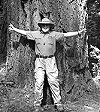 |
|
plants at CalPoly, co-author of California Vegetation (1995) and Vascular Plant Taxonomy (1996), a major contributor to and co-editor of the Jepson Manual, and a major contributor to the Flora of North America North of Mexico. He grew up in Illinois and decided on a career in botany while in high school. He received a BS degree (1968) and an MS degree (1970) from Arizona State University, and a doctorate in 1973 from Ohio State University. He joined the faculty of California Polytechnic State University at San Luis Obispo in 1978 and was a professor of biology. He was |
also the editor of Volumes 35 through 37 of the botanical journal Madroño (1988-1990), and the co-author with Robert F. Hoover of the monumental work Vascular Plants of San Luis Obispo County. In addition to the western United States particularly California and Arizona, he has botanized in Alaska, Hawaii, Guam, Bolivia, Peru, El Salvador, Mexico, and Puerto Rico. In 2002-2003 he collected in South Africa and Lesotho. He is emeritus professor at Cal Poly San Luis Obispo. His primary research has continued to focus on Asteraceae systematics and on the floristics of western North America, especially Arizona and California. His collection numbers began in 1966 and are now well over 30,000. (Photo credit: Cal Poly San Luis Obispo)
-
kelley'anum: named for Lynwood Julius Kelley (1885-1952), born in Fresno,
California, a dairyman for many years for various institutions in Alameda County,
and an amateur naturalist who botanized in the Sierra Nevadas and assisted John Gill Lemmon in 1902. He was born the sixth of eight sons to the Rev. Douglas Ottinger Kelley who moved to California from Ohio. He studied agriculture at the University of California, but didn't get a degree. He was superintendent of a dairy in San Leandro for a while, and then in Napa. He returned to Alameda County after defaulting on a loan on his farm in Napa, taking a job as deputy dairy inspector and assistant health officer. He ran the dairy on the grounds of the Alameda County Hospital in San Leandro until his death. Lilium kelleyanum was published by J.G. Lemmon who said: "I take great pleasure in naming this beautiful plant, Lilium kelleyanum, in honor of the devoted young naturalist, Lynwood J. Kelley, in grateful acknowledgment of his kind assistance, which enabled me to make the special trip to Bubb's Creek, where plants in full bloom were discovered."
- kel'leyi: named for Bradford Mark Kelley (1950- ), who guided the author, orchid specialist Paul Martin Brown, to one of several sites for this locally abundant hybrid. He is a member of the California Native Plant Society, the California Lichen Society, and the Mycological Society of San Francisco. He has volunteered to monitor rare plants in the Point Reyes National Seashore. (Platanthera X kelleyi)
-
kel'leyi: named for Walter Almond Kelley (1942-2010), a well-known American botanist and plant taxonomist. He
 |
|
was born in Texarkana, Texas, and spent part of his childhood in Roswell, New Mexico, before moving to southern California. His grandparents, aunts and uncles nourished his love of gardening and the outdoor world. He attended North Hollywood High School and Cal State Northridge where he earned both his bachelor's and master's degrees in biology. Two years after he married Janet Baer, they moved to Fort Collins, Colorado, where he pursued his PhD in botany. In 1977 they moved to Grand Junction where he accepted a professorship in biology at Mesa State College |
(now Colorado Mesa University), a position which he held for 30 years. He spent a good deal of his life researching the taxonomy of genus Cryptantha. He was dedicated to scholarly pursuits, teaching, and researching plants. He contributed to a section of the California flora, and worked on various projects with the Nature Conservancy, BLM, the Ute tribe, Earthwatch and other organizations. He traveled to Costa Rica first in 1989 and that exposure triggered a 20-year love affair with that country. He worked in partnership with the Organization for Tropical Studies at La Selva Biological Station and became particular fascinated with Piper, the genus of the pepper plants. He and his wife took countless trips to Costa Rica. He was a proud father and a loving husband, and frequently took his sons to explore the wonders of nature. He was quiet and humble, generous and gentle, tolerant and principled, and he was a significant figure in the botanical community. He passed away suddenly at the age of 68 in the Costa Rican rainforest that he loved. He was honored by the naming of the Walter Almond Kelley Herbarium at Colorado Mesa University in Grand Junction, a herbarium which includes over 5,000 specimens that are mainly dedicated to the flora of the Great Basin, but also represented are many Piper and Cryptantha species. (Photo credit: Legacy.com) ( Juniperus communis var. kelleyi)
- kellman'ii: named for Kenneth Mark Kellman (c.1951- ), an American lichenologist and bryologist at the University of California, Santa Cruz, author of "A Catalog of the Mosses of Santa Cruz County, California" in Madroño, Vol. 50, No. 2, field associate of the California Academy of Sciences, and member of the Santa Cruz County chapter of the California Native Plant Society.
-
Kellog'gia/kelloggia'na/kellog'gii:
named for Dr. Albert Kellogg (1813-1887), a botanist, physician, and one of 7
 |
|
founders of the California Academy of Sciences in 1853. He was born in Connecticut and studied medicine with a physician in Middletown, then enrolled at the Medical College of South Carolina and finally at Transylvania University in Lexington, Kentucky, where he received his doctor of medicine degree. He had been interested in natural history from an early age and in the mid-1840s he traveled through the southern and southwestern states collecting plants and studying the vegetation. He moved to California during the gold rush of 1848, traveling around the Horn and |
finally settling in San Francisco as a physician and becoming the first resident botanist in California. Exploring the natural history of the Sierras, he published the first extensive account of Sequoia gigantea in 1855. From JSTOR: “In search of adventure again, Kellogg joined the U.S. Coast and Geodetic Survey as botanist and surgeon, leaving on their expedition to explore the Bering Sea and Alaska in 1867. The trees he studied along the Pacific coast during this expedition contributed to his most impressive botanical work, the Forest Trees of California. Published in 1882 it contained many of his own drawings as he was a talented draftsman. In total Kellogg added some 40 new species to the flora of North America and the genus Kelloggia Torr. ex Hook.f. was named for him for his contributions.” As he became more involved with botany his enthusiasm for his medical practice waned. He and his great friend William George Washington Harford (see harfordii) often traveled together, including several trips to the Channel Islands where in 1874 they became the first botanists to collect on Santa Cruz Island. Kellogg also collected on Santa Barbara Island in 1871 and described and named Coreopsis gigantea. Many of the plants they collected were new to science. In some ways he was way ahead of his time, and one example of this was his belief that women should be included in scientific and natural history work, and two women who were later hired as curators at the Academy were the incomparable Katherine Brandegee and Alice Eastwood. He was especially drawn to the study of trees and he published a book in 1889 with Edward L. Greene entitled Illustrations of West American Oaks with 400 botanical drawings. He died in Alameda. The genus Kelloggia was published by Joseph Dalton Hooker in 1874 based on a previous description by John Torrey. (photo credit: Huntington Institute for Botanical Investigation)
-
kel'seyi: named for the Reverand Francis Duncan Kelsey (1849-1905), a Congregationalist minister and botanist.
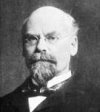 |
|
He was born in New Washington, Indiana, but soon moved with his family to southern Ohio, and then in 1856 to Columbus. He earned a BA degree at Marietta College in 1870 and a BD degree from Andover Theological Seminary in Massachusetts in 1874, following which he held pastorates in Maine, Attleboro, Massachusetts, and Helena, Montana. During his pastorate in Helena (1885-1893), he was actively engaged in studying native plants and began his botanical career. From 1887 to 1890 he was a lecturer at the College of Montana in Deer Lodge, and in 1890 the |
College conferred on him the degree of ScD. He left Montana in 1893 to accept the first professorship of botany at Oberlin College in Toledo. After leaving his teaching and curatorial duties in 1897 he held a pastorate in Toledo and was lecturer in botany at the Smead School for Girls (also in Toledo) until his death. During his fairly brief botanical career he published 14 papers in professional journals, described ten taxa previously unknown to science, and assembled a private herbarium of more than 6,000 specimens. His herbarium represents one of the important early collections of Montana plants and is rich in type material. He was honored by the genus name Kelseya. (Photo credit: University of North Carolina Herbarium)
- kennedia'num/kennedy'ana/kenned'yi: named for Patrick Paul Beveridge Kennedy (1874-1930), an English professor
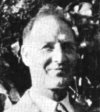 |
|
of agronomy. He came from a line of horticulturalists and landscape architects. He was born at Mt. Vernon near Glasgow, Scotland, but after his early life resided in Ontario, where he attended Guelph Agricultural College before attending the University of Toronto. He went on to gain his doctor of philosophy degree from Cornell University in 1899 and from there joined the agrostology division of the US Department of Agriculture. He was appointed associate professor of botany and entomology at the University of Nevada in 1900 and professor of botany, horticulture and forestry |
there in 1904, when he was put in charge of that department. He remained at Nevada until 1913, when he left to take up the position of assistant professor of agronomy in the University of California at Berkeley. He was professor there at the time of his death in January, 1930. Kennedy was a member of the California Botanical Society and served as its president in 1915-1917. He was particularly interested in the clovers and made important contributions to their taxonomy. He also published on grasses, saltbushes, forage plants, alpine plants, and plant ecology. He did much to advance practical agronomy, and by the introduction of various grasses and forage plants improved the stock ranges of California. The herbaria of economic plants, weeds and seeds, which he assembled and which remain with the University of California, are unequaled in the west. He collected actively in California, Nevada and Mexico, and on Santa Catalina Island. (Agrostis kennedyana, Artemisia kennedyi, Penstemon speciosus ssp. kennedyi, Stenotus acaulis var. kennedyi, Trifolium wormskioldii var. kennedianum)
-
kenned'yi: named for William Ledlie Kennedy
(c. 1827-1887), who collected specimens in Kern Co. He came to California in 1849 on the bark J.R. Gardner and became a well-known figure in Kern County, owning several stores and stamp mills. In 1876 he sent a collection of specimens to botanist Joseph Trimble Rothrock at the Smithsonian Institution where they were added to those collected by Rothrock the previous year. The extent of his interest in botany is not clear, but he did meet Rothrock when he botanized the Cuddy Valley, Mt. Pinos and the Fort Tejon area, and collected samples of what came to be known as Calochortus kennedyi and Eriogonum kennedyi. A third species named for him by Thomas Conrad Porter in 1877, Gilia kennedyi, is now considered synonymous with Linanthus parryae.
David Hollombe provided the following additional information about him: "[He was] born in Ireland about 1827, lived in New York until June 12, 1849 when he and Grant Thorburn, Jr. sailed for San Francisco and was in Los Angeles in the 1850 census. Naturalized in LA in 1855. Opened a store in Keyesville in 1856 with William Marsh and with him also set up a stamp mill and pack mule service over the Greenhorn Mountains in the southern Sierra Nevadas. In 1860 they set up ore processing mills in the Coso Mts south of China Lake. He was secretary of a group formed to separate Kern County from Tulare and ran unsuccessfully for supervisor of the new county, began prospecting in Inyo County, and was part of the group that discovered silver in Surprise Canyon in the Panamints.
1875 was also the year that Joseph Trimble Rothrock traveled from Santa Barbara to Mount Whitney as surgeon and botanist of Lt. George M. Wheeler's US Geographical Surveys West of the Hundredth Meridian. By the time Rothrock reached Fort Tejon it was already late July, and so most of his collecting was done at the higher elevations. In early September, at La Motte's Ranch (Lamont Meadow?) 'through the kindness of Mr. Kennedy, Rothrock was put in possession of some chia, an article well known to the Mexicans and Indians, who use it as food on their long trips, and also mix it with water to render it (water) more palatable and refreshing, and to do away with the necessity of drinking so much.' Mr. Kennedy was also persuaded to make botanical collections for him the following spring. Kennedy's 'impressive set of collections,' as Twisselmann describes them [in A Flora of Kern County], included the types of the two species that bear his name, both collected on or near Mount Piños. The Economic Botany section of the survey report contains his account of the use of the red roots of 'popcorn flower' ( Plagiobothrys nothofulvus) as a cosmetic by the indian women of Fort Tejon. I haven't found any details of Kennedy's later years, although his name appears in Kern County voting registers at Fort Tejon in 1876 and at Bakersfield in 1880. He may be the William Kennedy listed in the 1880 census in a hospital in San Francisco with broken ribs."
He died in Phoenix in 1887.
( Calochortus
kennedyi var. kennedyi, Calochortus kennedyi var. munzii, Eriogonum
kennedyi var. alpigenum, Eriogonum
kennedyi var. austromontanum, Eriogonum
kennedyi var. kennedyi, Gilia kennedyi)
-
Kentran'thus: see Centranthus.
-
kentrophy'ta: an old name meaning "spiny growth."
-
kernen'se/kernen'sis: probably meaning "of
Kern County." There are a number of taxon in California with this epithet.
-
ker'neri: named for Austrian botanist Anton Joseph Kerner von Marilaun
(1831-1898). The following is quoted from
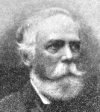 |
|
a superb website called Some
Biogeographers, Evolutionists and Ecologists: Chrono-Biographical
Sketches by Charles H. Smith, Joshua Woleben and Carubie Rodgers
at Western Kentucky University: "Kerner von Marilaun's work was
well known to both Charles Darwin and Alfred Russel Wallace, who refer
to him in their writings. Kerner was in a good position to develop
natural history studies, as for most of his professional life he held
positions both as director of a botanical garden and as a university
professor. He was known especially as an outstanding expert on alpine |
floras; further, he did important experimental work in an alpine setting
when he transported a number of species cultivated in Vienna to high
altitudes nearby to examine any changes that might take place, and
whether these changes would prove hereditarily transmissible. Changes
in form and life cycle were in fact observed, but only remained if
the plants were kept at the high altitude location: thus, the environment
appeared to be responsible. Kerner's work extended to efforts in regional
floristics, systematic botany, and popular writing." He began
his career like so many botanists by studying medicine at the University
of Vienna, then became a teacher of natural history. In 1860 he was
made professor of natural history and director of the botanical gardens
and museum of natural history at the University of Innsbruck, and
then from 1878 to 1898 was professor of systematic botany at the University
of Vienna and director of the Vienna Botanical Gardens. He was the
author of Das Pflanzenleben der Donaulaender ( The Plant
Life of the Danube Region, 1863), Pflanzenleben ( Plant
Life, in two volumes, 1890-1891), and Flowers and Their Unbidden
Guests 1878), and then in 1895-1896 he published his English language
version of the Pflanzenleben, The Natural History of Plants,
Their Forms, Growth, Reproduction, and Distribution in two volumes.
- Kerner'ia: named for Johann Simon von Kerner (1755-1830), a German physician and botanist born in Kirchheim unter Teck, Baden-Württemberg, the son of a gardener. He followed in his father’s footsteps and became a teacher of botany and plant drawing in 1780 at Carl Eugen of Württemberg University at Schloss Solitude near Stuttgart. In 1794 he became the dean of the economic faculty. One of his most important pupils was zoologist and paleontologist Georges Cuvier. He then became overseer of the botanical garden established by Duke Carl Eugen. He was knighted in 1812. He published many illustrated works, many of which were illustrated by himself. The focus of his work was the presentation of economically important plants. He wrote in 1786 also a "Flora Stuttgardiensis," an early German local flora which was a first for the area of Stuttgart and included mosses, lichens and mushrooms. He died in Stuttgart. The genus Kerneria was published by Conrad Moench in 1794.
- kerr'ii: named for Mark Elias Schomberg Kerr (1883-1950). He emigrated from Kinlough, Ireland, to the United States and served in the American Expeditionary Force during the First World War, where as a PFC he was awarded the Distinguished Service Cross for extraordinary heroism in action near Fleville and St. Juvin, France, October 11-13, 1918. The award citation stated: “After 36 hours of continuous firing over heavily shelled roads, Private Kerr upon his own initiative was the first to establish liaison with an advanced dressing station which had been isolated by the explosion of a tank trap. To do this he lifted his car across the mine crater with the aid of some infantrymen, and for eight hours thereafter drove his ambulance through a heavy bombardment of high-explosive and gas shells between the mine crater and the dressing station. During this period his car was pierced repeatedly by shell fragments, two of his patients receiving additional wounds. Two days later when the infantry had made a further advance his car was again the first to establish liaison with an advanced dressing station on the outskirts of St. Juvin.” Following the war he settled in Independence (Inyo County), California. He was the first curator (1931-1934) of the museum at Independence, now called the Eastern California Museum, when it was established in 1928. He made an exhibit of the plants and their uses by the Paiute Indians. When the anthropologist Charles Irwin was director of the museum (1976-1982), he edited and published Kerr’s manuscript on the ethnobotany of the Inyo Indians (The Shoshoni Indians of Inyo County, California: The Kerr Manuscript). He met Mary DeDecker when she moved to Independence and helped her get started identifying the local flora, and she thought highly of him. He took an active interest in the Boy Scout movement, mountaineering, indian welfare and natural history. He died at Pearl Harbor, Hawaii. One of his brothers, the Irish medical doctor and botanist Arthur Francis George Kerr (1877-1942), was known particularly for his botanical work which was important for the study of the flora of Thailand, and had a number of plants named for him. Mark Kerr left Inyo County early in World War II to participate in war work in Hawaii as a civilian laborer working for the government and traveling on navy transport ships. He donated his herbarium to the California Academy of Sciences and died at Pearl Harbor in 1950.
- kess'leri: named for Robert Kessler (1877-1930), a house painter, decorator, floor finisher, seedsman, gardener, plant collector. He was born in New Braunfels, Texas and came to Los Angeles by 1915, later living in Whittier. A type specimen of Lilium parryi var. kessleri was collected by Mr. Kessler 1923 at the upper end of Little Rock Creek, San Gabriel Mts.
- Kiaer'ia: named for Frantz Caspar Kiaer (1835-1893), a Norwegian doctor, plant collector and bryologist. He was born in Drammen municipality and died in Oslo. The genus Kiaeria was published by Ingebrigt Severin Hagen in 1915.
-
Kick'xia: named for Jean Kickx, Sr. (1775-1831)
and his son Jean Kickx, Jr. (1803-1864) (photo shown). According
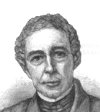 |
|
to Umberto
Quattrocchi, Jean Kickx, Sr. was a Belgian professor of botany, pharmacy
and minerology at a tmedical school in Brussels, and was the author
of Flora bruxellensis, published in Brussels in 1812. Jean Kickx, Jr. was also a professor of botany and malacology in Brussels (1831-1835) and at the University of Ghent from 1835 to 1864, and was the original author of Flore cryptogamique des Flandres (Cryptogamatic Plants of Flanders), a work completed and published posthumously in 1867 by his son Jean Jacques Kickx (1842-1887), also a botanist, |
professor and vice-chancellor of the University of Ghent. He received his doctorate at Leuven and was a co-founder of the Société royale de botanique de Belgique. He also published Specimen inaugurale exhibens synopsin molluscorum Brabantiæ Australi indigenorum with Francis Joseph Adelmann in1830, Flore cryptogamique des environs de Louvain, ou, Description des plantes cryptogames et agames qui croissent dans le brabant et dans une partie de la province d'Anvers (1835) and Notice sur quelques champignons du Mexique (1841).The genus
Kickxia was named in 1827 by Barthélemy Charles Joseph Dumortier.
- kierstead'iae: named for Julie Anne Kierstead (1953- ), for 30 years the forest botanist for the Shasta-Trinity National Forest in northern California, retiring in 2019. She published extensively on the floristics and geography of the Klamath Ranges in California, including the ecology and distribution of Neviusia cliftonii, a noteworthy species that was published by Jim Shevock, Barbara Ertter, and Dean Taylor. She did rare plant surveys and conservation work in Oregon and California. She has a BS in botany from Oregon State University and an MS in biology from Northern Arizona University, and worked for the Berry Botanic Garden in Portland as conservation director, developing a seed bank for rare & endangered plants of the Pacific Northwest and helped get a state endangered species act passed in Oregon. She also served as co-author and technical editor for the University of California Agriculture & Natural Resources publication Illustrated Field Guide to Selected Rare Plants of Northern California published in 2001. She is often listed as Julie Kierstead Nelson, so I presume that is her married name.
-
killip'pii: named for Ellsworth Paine Killip (1890-1968),
a botanist from the National Herbarium of the Smithsonian
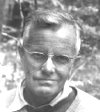 |
|
Institution
who by chance was associated with the collection gathered by one of
the great biological expeditions of modern times, the Royal Botanical
Expedition led by Jose Mutis of Spain to the area known then as Nuevo
Granada, an area that today would include large parts of northern
South America and southern Central America. This monumental effort
began in 1783 with the blessing of the Spanish Court and included
botanical, biological and mineralogical surveys. Continuing for some
thirty years, the expedition made a vast collection of specimens and descriptions, including |
some 6,000 illustrations of 2,700 plant species,
possibly the greatest collection of botanical illustrations ever made.
After the deaths of Mutis and his successor, Francisco Caldas, the
king of Spain summarily ordered the collection shipped to the Royal
Botanical Gardens of Madrid, where it languished essentially forgotten
and unused until 1929. It was then that Ellsworth Paine Killip began the enormous
job of organizing it, a job whose fruition was not to be until the
late 1953 with the publication of the first volume of illustrations.
Thus far 23 volumes have been produced representing perhaps one-fifth
of the species that were described by Mutis and Caldas. Killip was raised in upstate New York and was awarded an AB degree from the University of Rochester in 1911. He worked as an associate curator at the Rochester Academy of Sciences before joing the military in 1918. In 1919 he joined the staff of the United States National Museum (USNM, later to become the Smithsonian) as an aide in the Division of Plants. He was promoted to assistant curator in 1927, associate curator in 1928, and curator in 1946. In 1947, Killip was appointed head curator of the newly established department of botany, USNM, a position he retained until his retirement in 1950. Killip specialized in the taxonomy of South American plants, and collected in Columbia, Argentina, Brazil, Chile, Cuba, Panama, Peru and Venezuela. He died in Redlands, California. (Photo credit: www.passionflow.co.uk)
- Kindberg'ia/kindberg'ii: named for Nils Conrad Kindberg (1832-1910), a Swedish bryologist born in Karlstad. He studied at Uppsala University beginning in 1849 and received a PhD in 1857. In 1859 he worked as a teacher in Vänersborg, then from 1860 to 1901 taught classes in natural sciences and mathematics in Linköping. The genus Kindbergia was published by Ryszard Ochyra in 1982.
-
king'ii: named for Clarence Rivers King (1842-1901), a California geologist connected with the California Geolo-
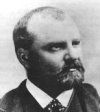 |
|
gical Survey in the 1860s. King’s businessman father died in China when King was only six, and when he was 17 he dropped out of high school without graduating. He had been prone to some illnesses and fits of depression, but with the help of his stepfather he entered the Sheffield Scientific School at Yale and was a member of its first graduating class receiving a bachelor’s degree in 1862. He headed for California to climb mountains and study geology, and joined the California State Geological Survey as an unpaid assistant geologist. He explored the Sierra Nevada |
mountain range in 1864. In 1865 he made a trip to Nicaragua where he contracted malaria, and two years later he was appointed U. S. geologist-in-charge of the U.S. Geological Exploration of the Fortieth Parallel, during which he surveyed some 12,000 square miles and collected over 3,000 specimens of rocks, minerals and fossils. He published a book about his adventures entitled Mountaineering in the Sierra Nevada in 1872. He also conducted the survey of the Yosemite Valley Mountains and the glaciers on Mount Shasta, California in 1875, and in 1879 he was appointed the first director of the United States Geological Survey. He served in that position for two years then became interested in geological work as it related to mining serving as a consultant for the Anglo-American Mining Company. By 1884 he was back in New York where he met an African-American woman, and since interracial marriage was illegal, he passed himself off as a black Pullman car porter, and they were married in 1888 without his wife knowing that he was white. During the following years he continued to have financial problems and such periods of depression that he was actually committed for a time. After being declared ‘recovered,' he traveled to the Caribbean, got whooping cough, and was later diagnosed with tuberculosis. After thirteen years of a common law marriage, he finally admitted to his wife that he was not black. The only will he had was sadly from before he was married and everything he had was left to his mother. His published scientific studies of western geology are in the American Journal of Science and Smithsonian Institute. Despite a life which many including King himself would consider a failure, he is considered one of the greatest geological scientists of the 19th century. His cause of death was recorded as tuberculosis. (Photo credit: Find-a-Grave)
-
kingstonen'se: of or from the Kingston Mountains in northeast San
Bernardino County.
-
kinkien'se/kinkien'sis: from the Tongva names Kinki (for San Clemente Island)
and/or Kinkipar (a village on that island), this taxon's common name
in the Jepson Manual is San Clemente Island larkspur.
- kinsel'iae: named for Katherine Kinsel (Mrs. Cornelius Herman Muller) (1909-1995), an American botanist married to Professor Cornelius Muller, botanist, ecologist, and pioneer in the study of allelopathy. She was the director of the botanical garden of Santa Barbara from 1950 to 1973. She was part of her husband's studies of vegetation and oak-collecting expeditions, and participated in the creation of extensive field notes that are included in those collections. He and Katherine also collaborated on a publication about Jean-Louis Berlandier’s botanical collections in Mexico in the 1820s.
-
kirb'yi: named for Frank Joseph Kirby (1911-1992), an electronics technician and ham radio operator. He was an instrument maker at Shell Development Emeryville in 1940, and was working in electronics at Naval Air Weapons Station China Lake in the 1950 census. An obituary in the Santa Rosa Press-Democrat, 14 January, 1992, has this: "Sonoma resident Jesse Francis 'Frank' Kirby died Saturday in a local convalescent hospital. He was 80.
Kirby was born in San Francisco and lived in Sonoma for 16 years. He was a ham radio operator and a driver for Care-A-Van. He was a member of St. Francis Solano Catholic Church."
His name has been referred to as Frank Joseph Kirby and Jesse Francis Kirby.
- kirk'ii: named for Jack Gardiner Kirk (1906-2007). "A 5-foot-5, 135-pound, lifelong vegetarian, he was born in 1906 and grew up poor in Mariposa County with three brothers and a sister. His father, an Irish immigrant, died when he was relatively young, forcing him to work on a farm to help support the family. He was a small child and, according to legend, he began running, often barefoot, to get away from his brothers and bullies. It later became a kind of escape from life's difficulties. He studied math and biology at Pacific Union College, where he eventually got a degree in biology. He worked for a time at the Shell oil refinery in Martinez. Kirk, who never married, worked as a garbage collector in Yosemite for several years in the 1940s, where he trained by running to the top of Yosemite Falls. He bought a 400-acre ranch in Mariposa near Yosemite in 1941 and lived there alone for 60 years with nothing but a couple of shacks and the old cars he fixed up. Drow Millar, a San Anselmo filmmaker who produced the award-winning documentary, 'The Dipsea Demon,' said Kirk mostly slept in the cars after he filled up the cabins with debris. He was cantankerous, often confronting neighbors and children who strayed onto his property. He had the dubious distinction according to Millar of spending time in all three jails in Mariposa County at one time or another, usually for firing his gun to scare off trespassers or mouthing off to a cop. He never had a telephone, bathed in a nearby creek where he also got his drinking water, and lost his electrical power during a dispute with PG&E in the early 1960s, never again having electricity. He might have died a complete unknown if not for his running prowess, which turned him into one of Marin County's most fabled characters, so popular that he had to carry a sign asking spectators at races not to pat him on the back. He first heard about the Dipsea race in 1930. The race, founded in 1905 by a group of Olympians calling themselves the 'Dipsea Indians,' was already renowned. Curious, Kirk took a ferry and train to Mill Valley and perusaded an old-timer to take him on the trail. Kirk was famous for barely making it in time for the race, often driving all night in Volkswagens held together with duct tape and baling wire. A strict Seventh-day Adventist, he would not leave for the Sunday race until after nightfall on the Sabbath, the night before the race. As he got older he would often say, 'Old runners never die, they just reach the 676th step,' referring to the 675 Dipsea stairs that start the race out of Mill Valley. He also said, "You don't stop running The legend of Jack Kirk began one day in 1933 or 1934 on a steep slope called Steep Ravine in Marin County during the famous Dipsea Trail race. The runners were tired as they headed toward Stinson Beach when suddenly a man appeared out of nowhere tearing down the slope, sliding and leaping over brush, passing other runners like they were standing still. 'Boy,' one runner said, 'that guy runs like a demon.' From then until he stopped running at 96 he was called the Dipsea Demon. He died at a hospital in Clovis (Fresno County) at the age of 100." (Passage mostly excerpted from a Bay area obituary in a webpage called SF Gate.) The taxon Viola adunca var. kirkii was published in 1966 by Victor Gershon Duran in Yosemite. Duran was a British-born collector of plants and insects, a hiker and wilderness camper, mechanic, carpenter and cabinetmaker, machinist and photographer, who moved to Los Angeles in 1904 and switched his interests from physics to botany and studied under Willis Linn Jepson, did extensive field studies in the White Mountains, and becoming a collector for the U.C. herbarium. He did extensive field studies in the White Mountains, and during the 1950s and 1960s he became an avid long-distance runner, running among other races the Dipsea Race in Marin County, and becoming friends with Jack Kirk whom he had met in his wanderings in Yosemite, and who apparently discovered this plant. (Viola adunca var. kirkii)
- kitsonia'na: named for Albert Ernest Kitson (1868-1937), a British/Australian geologist and naturalist. He was born in
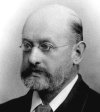 |
|
Audenshaw, Cheshire, England, and spent his early childhood in Nagpur in the central provinces of India where his family had moved when he was 1. In 1876 they emmigrated to Victoria in southeastern Australia. His parents ran the North Winston State School which both Albert and his younger brother attended. From an early age he took an interest in natural history and collected fossils throughout his life. He joined the postmaster-general's department as a clerk in 1886, subsequently transferring to the Department of Lands and Survey and then to the Department of |
Mines and Water Supply. During this time he also carried out geological field work. To pursue this work he began part-time studies in geology at the Working Men's College (now the Royal Melbourne Institute of Technology) and later at the University of Melbourne. In the Australian bush he developed a facility for handling snakes, and became an accomplished photographer. By 1903 he was second-in-command of the Geological Survey of Victoria and then senior geologist and for a time acting director. He was a member of the Royal Society, the Field Naturalists' Club of Victoria, the Australasian Institute of Mining Engineers and participated in all the meetings of the Australasian Association for the Advancement of Science between 1898 and 1907. Much of his later professional life was spent in Africa, and he became the principal mineral surveyor in Southern Nigeria, locating significant deposits of coal. Between 1913 and 1930 he was principal of the Mineral Survey in Gold Coast (now Ghana) and then director of the Geological Survey. He traveled round the colony by train and bicycle and discovered sizeable mineral deposits including bauxite and manganese. 32,000 tons of manganese were shipped to Britain from deposits Kitson had located and used in munitions production which was highly valuable to their war effort in the First World War. In 1919 Kitson found the first deposits of diamonds in Gold Coast and by 1934 the diamonds exported from Gold Coast amounted to 39% of the world’s supply that year. He was also associated with the development of hydroelectric power in that country. In 1930 he retired from Gold Coast to Buckinghamshire in England but continued to consult on geological matters relating to Africa, in particular in the field of gold mining. Wikipedia adds: “Numerous honors came Kitson's way in recognition of his work. He was appointed Commander of the Order of the British Empire (CBE) in 1918 and Companion of the Order of St Michael and St George (CMG) in 1922. In 1927 Kitson was knighted (KBE) for his services to geology. The Geological Society of London elected him as a fellow in 1897, awarded him the Wollaston fund in 1918 before honoring him with the very prestigious Lyell Medal in 1927, an annual award given to an outstanding earth scientist. In 1929 he was appointed as president of the geology section of the British Association for the Advancement of Science and, following his retirement, he became president of the Geologists' Association in 1934. Kitson was an official representative of the British Government at international geological congresses (four times) and at world power conferences (four times). One of the Buchan Caves in Victoria, Australia is named for him, as are a fossil mollusk, a fossil eucalypt and a living eucalypt. The Eucalyptus tree Eucalyptus kitsoniana bears his name, as does the lizard Panaspis kitsoni (sometimes considered a synonym of Panaspis togoensis). Kitson Avenue in Takoradi in modern-day Ghana is named in his honor as is Kitson Court in Benalla, Victoria, Australia and Kitson Place in the Florey suburb of Canberra, Australia.” The journal Nature described him as one of the foremost economic geologists in the world. He died in Beaconsfield of broncho-pneumonia and influenza. (Photo credit: Geological Society of London)
-
klamanthen'se/klamathen'sis: of or from the Klamath Range.
-
klee'i: named for Waldemar Goetrik Klee (1853-1891), an entomologist and head gardener of
the UC agricultural
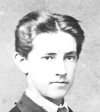 |
|
experimental grounds 1878-1886. He was appointed inspector of fruit pests by the California State Board of Horticulture in 1886, and made a name for himself as an entomologist. He was one of the original incorporators of the Santa Cruz Mountain Winery, and botanical author on olives and other subjects like "A Treatise on the Insects Injurious to Fruit and Fruit Trees of the State of California." He was born in Copenhagen one of a pair of twins. His twin died at the age of 2. He came to the US in 1872 at the age of 19 and was married with three children. He died of tuberculosis at the very |
early age of 37 at Gravenstein Ranch, Santa Cruz, California. (Photo credit: Geni)
-
Klein'ia: named for Jacob Theodor Klein (1685-1759), a German jurist, historian, botanist, zoologist, mathematician
 |
|
and diplomat in service of Polish King August II the Strong. He was born in Königsberg, Duchy of Prussia (now Kaliningrad, Russia), and studied natural history at the University of Königsberg. For six years from 1706 to 1712 he traveled through England, Holland, Germany and Austria. In 1713 following the death of his father he moved to Danzig and was elected city secretary. Between 1714 and 1716 he served as representative secretary at court for the cities of Dresden and then Warsaw. He began scientific exploration in 1713 and by 1722 was a member of the Institute of Sciences in |
Bologna publishing works on zoological nomenclature. He was elected a member of the Royal Society in London, the Academy of Science in St. Petersburg, the Deutsche Gesellschaft in Jena, and the Danzig Research Society. In 1718 he established a large botanical garden which unlike others included live animals, zoological, fossil and amber collections, and the shell collection of the mayor of Amsterdam Nicolaus Witsen. He also had a greenhouse which he used for experimentation with exotic plants. The system of zoological classification that he created was based on the number, shape and position of limbs, and was in conflict with that of Carl Linnaeus. He was interested in such varied groups as insects, amphibians, reptiles, fish, sea urchins and birds. His method of scientific analysis came under increasing criticism, and was in some cases based on peculiar ideas. He died in Danzig. The genus Kleinia was published by Philip Miller in 1754.
-
kleinii: named for William McKinley Klein (1933-1997), an American botanist. He earned a degree in range science forestry in 1955 and a master's degree in botany in 1957, both from Colorado State University. From 1977 to 1991 he was director of the Morris Arboretum of the University of Pennsylvania in Philadelphia and was responsible for raising more than $10 million for its renovation and expansion. After that he was director of the Fairchild Tropical Garden in Miami and when it was destroyed by a hurricane in 1992, he led the restoration efforts and re-opened the garden within two months. Finally he was president of the National Tropical Botanical Garden, which consists of four gardens in Hawaii and one in Coconut Grove, Florida. His successor at the Morris Arboretum said: ''He also laid the foundation for the internship program and helped lay the foundation and encouraged me to develop the plant exploration program.'' This program allowed staff members to visit China and other Asian countries to collect plants, something that only a few arboretums in the country engage in today. An obituary in the New York Times says: “Judy McKeon, the chief horticulturist at the arboretum, said Dr. Klein saw the garden ‘as part of a bigger art form, as well as an ecosystem -- his view of the garden combined both a humanistic and a scientific approach.’ In 1994, Dr. Klein moved to the island of Kauai in Hawaii where he began organizing the reopening of gardens that had been closed because of damage from a 1992 hurricane. Within two years, two of the gardens were re-opened, another opened earlier this year and a fourth opening was scheduled for this spring. He also expanded the staff to further research projects on the biology of tropical plants.” He died in Coral Gables, Florida. (Oenothera kleinii)
-
klinggraef'fii: named for Hugo Erich Meyer von Klinggräff (1820-1902), a German botanist specializing in bryophytes. He was born in Klein Watkowitz in northern Poland. His brother was botanist Carl Julius Meyer von Klinggräff, with whom he often collaborated. In 1826, he moved with his parents to a homestead located not far from Agram, Croatia. He later studied at the University of Königsberg, receiving his doctorate in 1846. Following graduation, he returned to Croatia, where he botanized in areas along the Adriatic Sea and islands within the Gulf of Quarnero. During this time period, he collaborated with other botanists, that included Mutius von Tommasini. In 1852 he acquired an estate in Wiszniewo bei Lobau, Province of Prussia. He died in Paleschken, the same area where he had been born.
-
klotzschia'nus: named for Johann Friedrich Klotzsch (1805-1860), a German botanist, mycologist and monographer of the Begoniaceae who was born in Wittenberg and originally trained as a pharmacist in Berlin and later enrolled in pharmaceutical and botanical studies. Wikipedia says: “In 1830–32 he was curator of William Jackson Hooker's herbarium at Glasgow University. Beginning in 1834 he collected plants in Saxony, Bohemia, Austria, Styria and possibly Hungary. In 1838 he replaced Adelbert von Chamisso (1781–1838) as curator and director of the Royal Herbarium in Berlin.” He studied many groups of plants, but is perhaps best known as a student of ferns and fungi. He earned a PhD in Berlin in 1834 and was honored with the plant genus name Klotzschia published by Ludolf Karl Chamisso in 1833.
-
knappia'na: named for Moses Arthur Knapp (1865-1957), a mining engineer. He was born in Columbia, California, and died at Glendale. He received a BS at the University of California in 1887. He came up with the idea by 1890 for diverting water from the Owens River to irrigate the Antelope Valley in Kern and Inyo Counties. He collected what became Brickellia knappiana in the vicinity of the Mojave River, California.
- kneif'fii: named for Friedrich Gotthard Kneiff (1785-1832), an Alsatian pharmacist, moss collector and cryptogamist. He was a pharmacist at Strasbourg Civil Hospital and co-author of Stirpes Cryptogamae Badensi-Alsaticae.
- knight'ii: named for Walter Knight (1914-2002).
-
Knipho'fia: named for Johann Hieronymus Kniphof (1704-1763), a German botanist, physician, and professor of
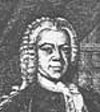 |
|
medicine. Wikipedia provides the following: “He studied medicine at the Universities of Jena and Erfurt, becoming a professor of medicine at the latter institution in 1737. In 1745 he succeeded Andreas Elias Büchner (1701–1769) as director of the library at Erfurt, two years later being named dean to the faculty of medicine. In 1761 he was chosen as university rector. At Erfurt, he assembled a large and impressive herbarium, about which in 1733, he first published a work [of botanical illustrations] with the title of Botanica in originali (later releases known as Botanica in Originali, |
seu Herbarium Vivum). Considered to be Kniphof's magnum opus, it would eventually be published in several editions. It was renowned for employing a preparation/printing technique known as 'nature printing,' which at the time was a little understood process that Kniphof had mastered in order to imprint details of various botanical specimens.” His father died when he was very young but thanks to his mother he was able to study medicine and because of the help of his friend Büchner he became a member of the highly prestigious Leopoldina, the world's oldest Academy of Sciences. The genus Kniphofia was named in his honor by the botanist Conrad Moench in 1794. (Photo credit: National Gardens Scotland)
- knowlton'ii: named for Frank Hall Knowlton (1860-1926), an American ornithologist, naturalist, paleobotanist and
 |
|
pioneer in the study of prehistoric climates based on geologic evidence, who discovered much about the distribution and structure of fossilized plants. He was born in Brandon, Vermont and studied at Middlebury College where he was introduced to and took a great interest in natural history, earning a BS degree in 1884 and an MS in 1887. He was a professor at George Washington University from 1887 to 1896, and curator of botany and fossil plants at the United States National Museum from 1887 to 1889. In 1889 he joined the US Geological Survey as an assistant paleon- |
tologist, was promoted to geologist in 1907, and was associated with the survey until his death in 1926. He received a PhD from George Washington University in 1896 and a ScD in 1921. He founded the journal The Plant World in 1897 and and edited it for its first seven years. Knowlton was also interested in birds and in 1909 produced Birds of the World published as part of the American Nature Series from Holt. His work on Mesozoic and Cenozoic plants occupied much of his research. His studies on fossil plants resulted in the publication of a valuable reference book, A Catalogue of the Mesozoic and Cenozoic Plants of North America (1919), and gave him valuable insights about the Earth’s climate before the Pleistocene epoch. He was also the author of Plants of the Past, published posthumously in 1927.
-
Kobres'ia: named for Austrian amateur botanist and plant collector Joseph Paul von Cobres (Kobres) (1747-1823), a
 |
|
geologist, minerologist, patron of botany and banker. He was born as Giuseppe Paolo Cobres probably in the Republic of Venice and settled in Augsburg in 1769. In 1770 he began collecting natural history books with great enthusiasm to make a great library and exhibited other natural history objects. He published a part of his book collection in 1781/1782 with the two-volume book catalog Deliciae Cobresianae. Scholars and scientists well appreciated his library and collections of natural history materials and many used them for research purposes. He possessed many books |
which have since become very rare or have simply disappeared. Cobres was involved with one of the most important banking houses in Augsburg but at some point was unable to avoid bankruptcy. The conflicts initiated by Napoleon caused an economic decline which forced him to sell a large country house and his beloved library some of which was acquired in 1811 by the Bavarian Academy of Sciences and other parts sold to other purchasers. Cobres was also for a time an imperial councilor to the Emperor Joseph II, a Knight in the Order of Malta, and a Captain of the Augsburg city militia. He was a member of the Imperial Leopoldinian-Carolinian Academy of Naturalists and a corresponding member of the Bavarian Academy of Sciences, and also belonged to a number of other professional and scientific societies. The genus Kobresia was published in his honor in 1805 by Carl Ludwig Willdenow.
-
Koch'ia: named for Wilhelm Daniel Josef Koch (1771-1849), a German physician and professor of botany from Kusel
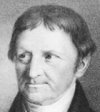 |
|
in the Rhineland-Palatinate where he was born the eldest of seven children. Wikipedia says: “Koch studied medicine at the Universities of Jena and Marburg, and afterwards was a Stadtphysicus (state physician) in Trarbach and Kaiserslautern (1798). In 1824 he became a professor of medicine and botany at the University of Erlangen, where he stayed for the remainder of his life. At Erlangen, he was also director of the botanical gardens. In 1833, he was elected a foreign member of the Royal Swedish Academy of Sciences. Among his better written efforts was a synopsis on German and |
Swiss flora titled Synopsis florae germanicae et helveticae (1835–37). Another noteworthy publication of his was Catalogus plantarum, quae in ditione Florae Palatinatus (Catalog of Palatinate flora) (1814).” He was also the author of De Salicibus Europaeis commentatio (Commentary on European Willows) in 1828 and De Plantis Labiatis in 1833. The genus Kochia was named in his honor in 1801 by Albrecht Wilhelm Roth.
- koch'ii: named for Hans Peter Gyllembourg Koch (1844-1918). He was born in Denmark and was studying at the
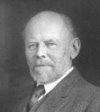 |
|
University of Copenhagen when in 1865 he decided to try his luck in the New World. He arrived at his uncle’s home on the Pearl River near New Orleans in 1868 but not liking the climate struck out for the frontier, calling himself simply Peter Koch. He traveled by riverboat to St. Louis and then continued up the Missouri to Fort Benton in the Montana territory. He began his new life near Fort Musselshell being a woodcutter, trading with the Crow indians, and buying books with all his spare cash. He had read philosophy, natural history, and languages (German, English, Greek and Latin) |
first at Latin school in Nykobing, and then later at the University of Copenhagen. He was profoundly interested in explorers and scientific expeditions, in particular those of Alexander von Humboldt. He had books by Charles Darwin, Louis Agassiz, and the geologies of Joseph Le Conte. He assiduously collected exploration journals, archaeological reports, and botanical and geological manuals, and was a scholar of the Lewis and Clark expedition, being helpful to Eliott Coues (the pre-eminent scholar of western exploration at the time) in his researches of the Lewis and Clark expedition routes, especially Captain Clark’s route down the Yellowstone. Coues later presented Peter with signed copies of his 4-volume History of the Expedition under the Command of Lewis and Clark. Koch was instrumental in forming Bozeman’s first public library and was chief among the founders of what later became Montana State University in Bozeman. Many native plant specimens which he eventually donated to the department of botany now form the core of the University’s collection. He was active in the the Montana Historical Society, in whose journals he first published his reminiscences of life on the Montana frontier. He eventually became a prosperous Bozeman businessman and one of the city’s first aldermen. His letters and diaries have been collected in a new book, Splendid on a Large Scale, The Writings of Hans Peter Gyllembourg Koch, Montana Territory, 1869-1874, edited by Kim Allen Scott, MSU special collections librarian and archivist. In 1882, Bozeman’s second bank, Bozeman National Bank, was established and Koch was chosen as cashier to run it. After many years and playing a major role in starting Bozeman and the college, Koch and his family moved to Pasadena, Calif., a better climate for his invalid daughter and for growing flowers. There Koch died in 1917. (Photo credit: Geni) (Arabis kochii)
- koch'ii: named for Leo Francis Koch (1916-1982), an American biologist and bryologist born at Dickinson, North
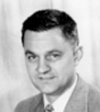 |
|
Dakota. He moved to Petaluma, California, where he studied at Petaluma High School, Santa Rosa Junior College and the University of California, Berkeley. He graduated with a BSc in agriculture in 1941. Later he received a master's degree and a PhD in biology from the University of Michigan. He studied and collected the mosses of California, publishing Preliminary studies of California Mosses in 1949 and Mosses of California: An annotated list of species in 1950. He taught at Bakersfield College & Tulare University before going to the University of Illinois in 1954 where |
he held an assistant professorship in biology. In his professional role as a bryologist, Dr. Koch was a director of the Hepatic Exchange of the American Bryological Society, and associate editor of the Journal of the Hattori Botanical Laboratory in Japan. Among his publications are a score of papers on bryology (the study of mosses & liverworts) as well as a dozen on the philosophy of humanism and biological science. In 1960 he wrote a letter to the Daily Illini in response to an article printed there criticizing campus heavy petting parties. His letter defended premarital sex and provoked public outrage. In response the president of the university fired him. The University of Illinois was censured by the American Association of University Professors for the ouster. Koch appealed to the Illinois Supreme Court and the Supreme Court of the United States, which both refused to grant him a hearing. Following his dismissal from Illinois, Koch met free love advocate Jefferson Poland, and together they founded the Sexual Freedom League in New York City. Also in 1960 he published an important paper on plant classification entitled “The Subkingdoms of Plants.” He was a humanist and libertarian and was involved in anti-war, civil liberties, civil rights, and other counter-culture movements. He was married and had one daughter and two sons. He died in Glendale, California, and was buried in Pasadena. (Photo credit: University of Illinois Archives) (Entosthodon kochii)
-
Koeberlin'ia: named for Christoph Ludwig Köberlin (Koeberlin) (1794-1862), a German clergyman and botanist. He was born in Volkratshofen the son of a pastor who stimulated his botanical interests. He was married to Helene Elisabeth Zangmeister in 1819 and had two sons. He attended high school in Augsburg and studied theology in Erlangen from 1813 to 1817. This was where he made the acquaintance of Joseph Gerhard Zuccarini and Carl Friedrich Philipp von Martius with whom he became lifelong friends and colleagues. He was a pastor in the Bavarian Evangelical Reformed Church, serving from 1819 until his death in a number of communities, and explored the flora of the Bavarian Upper Swabia region, the Allgäu region and the Alps. He was particularly interested in the moss flora of Memmingen, a town in Swabia where he maintained a herbarium. He died in Eysölden. The genus Koeberlinia was named for him in 1832 by Zaccarini.
-
koeh'leri: named for Richard Koehler (1844-1932), a German-American railroad official.
He was born in Schleitz, Germany, and was involved in railroad operations in that country for ten years before coming to the United States in 1874. He was sent to Portland "as special agent for the German and
English bondholders of the Oregon & California Railroad"
and was later involved with the Oregon Central and Southern Pacific.
The 1898 Quarterly of the Oregon Historical Society provides this: "He was general manager of the Oregon and California (Rail) Road for thirty-two years. Under his management over four hundred miles of track have been added to the railroad mileage in the Willamette Valley and Southern Oregon. And in addition to this the roads under his supervision have been entirely rebuilt with new steel rails, new bridges, expensive embankment fills, reduction of grades and straightening of track.In this work Mr. Koehler has disbursed many millions of dollars, and in every way more than doubled the value of the property under his care, not only to its owners but also to the farmers and businessmen along the line. Such a long term of service as this in one position of such power and responsibility shows with what fidelity Richard Koehler has discharged his responsible duties to his clients and the people." I have no further information about him or what significant botanical thing might have justified naming a plant for him such as Arabis/Boechera koehleri, commonly called Koehler's rock-cress, except that Thomas Howell who published the taxon Arabis koehleri in a Flora of Northwest America in 1897 said it was "in honor of R. Koehler of the S.P.R.R. (Southern Pacific Rail Road) who has shown me many favors while botanizing in Oregon."
-
Koeler'ia: named for Georg Ludwig Köler (Koeler) (1765-1807), a German physician, pharmacist, botany professor, student of the grasses, and author of a work on the grasses of Germany and France entitled Descriptio graminum in Gallia et Germania (1802). He was born in Stuttgart and attended the University of Göttingen around 1780 to study medicine. He practiced as the personal physician of Count Carl Ludwig of Salm-Grumbach. He began botanical studies in 1786 in the Rheingau region. His goal was to write a flora of Germany, France and Switzerland, and he collected herbarium material which he passed to Augustin de Candolle, but the section on grasses was all he was able to complete. He was considered one of the outstanding botanists of his time. In 1799 he was appointed professor of natural history at the University of Mainz. He died in Mainz as a result of the flu and typhus epidemic which broke out there. The genus Koeleria was published in 1805 by Christiaan Hendrik Persoon.
-
koelerio'ides: like genus Koeleria.
- Koel'lia: named for Johann Ludwig Christian Kölle (1763-1797), a German physician and botanist born in Münchberg. He worked as a medical counselor and also as a county physician in Bayreuth. He was a member of the Botanical Society of Regensburg, and author of Johann Ludwig Christian Kölle (1763-1797) and aurhor of Spicilegium observationum de aconito (1787) and Flora des Fürstenthumes Bayreuth (1798). The genus Koellia was published by Conrad Moench in 1794.
-
Koelreuter'ia: named for Josef Gottlieb Kölreuter (1733-1806), a German botanist, physician, professor of natural
 |
|
history, and director of the botanical garden at Karlsruhe. He was born in Württemberg the son of an apothecary and took an early interest in natural history. He was educated at the Universities of Berlin and Leipzig, and at Tübingen, where he received his medical degree in 1755 and received an appointment at the Imperial Academy of Sciences at St. Petersburg where he worked both on botany and the curation of fish and coral collections, and remained there until 1761. He pioneered the study of plant fertilization and hybridization, and was interested in sexual reproduction in |
plants. In 1761 he returned to Germany and went to Karlsruhe in 1764 where he was a professor of natural history and the director and curator of the botanical garden. He was dismissed from the position as curator of the gardens after a dispute with the head gardener, but remained as a professor until he died in 1806. As part of his research into plant reproduction, he conducted nearly 500 hybridization experiments, and examined the pollen characteristics of over 1,000 plants. Major works of his included Dissertatio inauguralis medica de insectis coleopteris, nec non de plantis quibusdam rarioribus... Tubingae: litteris Erhardianis (1755), Vorläufige Nachricht von einigen, das Geschlecht der Pflanzen betreffenden Versuchen (1761-1766), and Das entdeckte Geheimniss der Cryptogamie (1777). The Encyclopedia Britannica includes the following: “The experimental results he obtained foreshadowed the work of the Austrian biologist Gregor Johann Mendel. Kölreuter recognized the importance of insects and wind as agents of pollen transfer in plant fertilization. He applied the sexual system of classification of the Swedish botanist and naturalist Carl Linnaeus to lower plant forms. His work was not recognized or appreciated until long after his death.” The genus Koelreuteria was named in his honor in 1782 by Friedrich Kasimir Medikus.
- kogholi'ini: this taxon is endemic to the Wailaki territory of Mendocino County and the name means "daylight coming" in the Wailaki language. The Wailaki were an Athapascan tribe or group of many villages formerly located on the main Eel River within a few miles of Round Valley, California. According to the authors it was chosen to honor the connection between the plant and the Wailaki people. Lomatium had a special standing in the native and herbal words and was found in the lyrics of an old traditional female puberty song. It is pronounced kog-oh-LI-in-ee.
- Kohlrausch'ia: named for Henriette Juliane Kohlrausch (née Eichmann) (1781-1841), a German botanist born in Hanover, Lower Saxony, and wife of Dr. Heinrich Kohlrausch (1780-1867), educator and historian, and Royal Prussian Privy Medical Councillor. An inscription on her graves marker reads "This grave was erected from the highest order of King Ernst August of Hannover because of her unending devotion to Queen Frederike." The genus Kohlrauschia in the Caryophyllaceae was published by Carl (Karl) Sigismund Kunth in 1838.
- koidzum'ii: named for Genichi Koidzumi (1883-1953), a Japanese botanist, plant collector, professor of plant taxon-
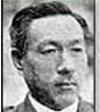 |
|
omy at Kyoto University, and authority on the families Rosaceae and Aceraceae. He was born in Yonezawa in Yamagata Prefecture in 1883. After graduating from the Sapporo Agricultural College, he studied biology at Tokyo Imperial University from 1905, continuing his studies there under Matsumura Jinzō, and receiving his doctorate in 1916. In 1919, he was appointed assistant professor at Kyoto Imperial University, where he remained (other than for a tour of the herbaria of Europe and the United States from 1925 to 1927) until his retirement in 1943; he was promoted |
to full professor in 1936. According to the International Plant Names Index, in total he published over 1,600 new botanical names. He helped to found the journal Acta Phytotaxonomica et Geobotanica beginning in 1932. Among his publications were Revisio Aceracearum Japonicarum (1911), Conspectus Rosaccarum Japonicarum (1913), Plantae Novae Amami-Ohsimensis (1926) and Florae Symbolae Orientali-Asiaticae (1930), and he was the co-author with Takenoshin Nakai of Trees and Shrubs Indigenous in Japan Proper (1927). He worked on Japanese flora and also collected plants in the Marshall Islands in 1915. He collected the type specimen of Glycine koidzumii in Miyako. He was the first to describe in 1924 the Yakushima white pine, Pinus amamiana, the name of which honors the Amami people who inhabit Japan’s Ryukyu islands south of Kyushu. He traversed different northern parts of the country, such as Island Jeju-do, Mt. Keumkang-san, and Hamkyongbuk-do during the summer months of 1932, 1933, and 1935. Koidzumi died in his hometown of Yonezawa in 1953. (Photo credit: PlantsGalore.com)
-
koilolep'is: hollow-scaled, from the Greek koilos, "hollow,"
and -lepis, "scale," this taxon's common name is
keeled bulrush.
- Ko'nig: named for Emmanuel König (1658-1731), a Swiss physicist and doctor of medicine in Basel. The son of a
 |
|
bookseller, he studied medicine and science and earned a master of science degree in 1677 and in 1682 a doctorate from the medical faculty of the University of Basel. He was also admitted to membership in the Leopoldina in that same year. He made study trips through Italy and France and then from 1695 taught as professor of ancient Greek to students of what was referred to as the Trivium, the three linguistic subjects of the seven liberal arts, which together with the mathematical subjects of the Quadrivium formed the basic study of medieval universities and consisted of the |
grammar, dialectics and thetoric. From 1703 he taught physics and from 1706 was professor of the natural sciences. From 1711 until his death he was professor of theoretical medicine, at which time he was succeeded by his son. The genus Konig was published by Michel Adanson in 1763.
- Koni'ga: named for Karl Dietrich Eberhard König (1774-1851), a German naturalist, mineralogist, and fellow of the
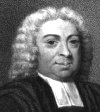 |
|
Royal Society. He was born in Braunschweig in Lower Saxony and educated at Göttingen. He came to England in 1800 to organize the natural history collections of Queen Charlotte, and anglicized his name to Charles Konig. In 1807 hr became an assistant to Jonas Dryander, who was the librarian of Joseph Banks and then succeeded George Shaw as assistant keeper of the Department of Natural History in the British Museum. He was associated with John Sims in the publication of Annals of Botany from 1805 to 1807, and described many fossils in the British |
Museum in a classic work entitled Icones fossilium sectiles (1820–1825). On the death of his superior in 1813, he took his place as keeper. He later became keeper of geology and mineralogy, and turned his attention to minerals and fossils, arranging the recently acquired collection of Mr. Greville. He retained the post until his sudden death in London in 1851. The genus Koniga was published by Robert Brown in 1826. (Photo credit: Internet Archive)
- Koponeniel'la: named for Finnish botanist Timo Juhani Koponen (1939- ) and/or his wife Aune Kylliki Koponen (1938- ), also a botanist. Timo was born in Varkaus and became a doctor of philosophy in 1968. He was associate professor of botany 1969–1986 and acting deputy professor of propaedeutic botany at the University of Helsinki in 1975–1976. He worked at the cryptogam department of the University of Helsinki Botanical Museum 1981-1985, the University of Helsinki botany department 1986-2002. He was also head of the University’s botanical garden. He has been a member of the Finnish Academy of Sciences since 2002. He has published about 300 works in plant systems and plant geography, specializing in the ecology of the leaf moss flora of Papua New Guinea and China. He has made numerous study and research trips to, among others, Australia, Japan, Canada, China, Papua New Guinea and Tanzania. He was chairman of the International Association of Bryologists 1988–1990, the East Asian Research Society 1988–1990, and the Nordic Bryological Society 1988–1989. The genus Koponeniella was published by Sanna Marjukka Huttunen and Mikhail (Misha) S. Ignatov in 2015.
-
Kopsiop'sis: literally means "like or having the form of genus Kopsia," which was named after Jan Kops (1765-1849),
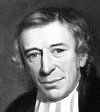 |
|
Dutch agonomist and professor of botany, author of Flora Batava and Index Plantarum. He was born in Amsterdam the son of a yarn merchant. When his father died in 1773 he moved with his mother to Haarlem where he attended first a French school and then a Latin school. Not wishing to follow his family’s textile tradition, he undertook to study Dutch literature and botany, enrolling in 1781 at the Amsterdam Theological Seminary and also attending courses in natural history at the Athenaeum Illustre of Amsterdam. He served as a pastor in Leiden from 1787 until 1800, however |
during this time he was passed over in 1792 as preacher for the Haarlem congregation and the same thing happened in Amsterdam. He consoled himself with botany and the first part of his Flora Batava appeared in 1800. His reputation as an agronomist was secured by this and a report he compiled regarding the possible conversion of dune lands into productive farmlands, and he was appointed as director of agriculture in the Netherlands with an office at the Hague, remaining in this position until 1815. He initiated the first Dutch agricultural magazine, Magazijn van Vaderlandschen Landbouw, and the formation of ten regional agricultural commissions. In 1808 he created the first Agricultural Cabinet to provide farmers with assistance and advice. He was appointed a professor of botany and agricultural economics in 1815 at the University of Utrecht and remained there until 1835, also preaching as a minister in Utrecht, The Hague and Amsterdam. His first wife had six sons and five daughters, and his second wife had five sons (three of whom died young) and one daughter. Flora Batava, with illustrations of all plants in the Netherlands, was a long series issued in installments with 461 issues with 2,240 plates published between 1800 and 1934. The genus Kopsiopsis was named in 1930 by Günther Beck von Managetta.
-
Kramer'ia: named for Johann Georg Heinrich Kramer
(1684-1744), an Austrian Army physician and botanist, and/or for his son William Heinrich Kramer (?-1765), physician, naturalist, entomologist and author of Elenchus Vegetabilium and Animalium per Austriam inferiorem Observatorum, a flora and fauna of Lower Austria, which was one of the first works to adopt the binomial nomenclature of Carl Linnaeus. Johann Georg was born in Sopron, Hungary, and died in Vienna. Thanks to David Hollombe for this addition. The genus Krameria was published by Pehr Loefling in 1758.
-
krantz'ii: named for Dr. Krantz is a recognized authority on flora of the San Bernardino Mountains; as well as the
 |
|
geography of the Salton Sea, where he served as the Salton Sea Database Program Director for eight years, overseeing a $4.7 million federal-assistance grant to develop a regional geographic database for the area. He served on the Salton Sea Science Subcommittee, an inter-agency panel established by then-Secretary of Interior Bruce Babbitt. He is the Senior Editor of the Salton Sea Atlas, and author of several encyclopedia entries on the Salton Sea and related topics. More recently, Dr. Krantz has been speaking and writing about the environmental impacts of hydraulic |
fracturing (or "fracking") in California. Harkening back to his original botanical roots, Tim was recently appointed as the first director of the Southern California Montane Botanic Garden at The Wildlands Conservancy's Oak Glen Preserve just 30 minutes from Redlands. Dr. Krantz currently serves as one of 23 Fulbright ambassadors in the United States, speaking to other colleges and universities about his Fulbright experience and opportunities for the international exchange of scholars. Dr. Krantz was awarded a Fulbright lecturer position in 2009-2010 to facilitate environmental technology and policy exchange between the U.S., European Union, California and Austria. Based at the Technische Universität Wien, he was a guest lecturer at TUW and TU Graz, as well as featured speaker before the Austrian National Chamber of Commerce, the United Nations Economic Commission for Europe, and several international renewable energy conferences. After completion of his appointment at TUW, Dr. Krantz served for three years as an American-Austrian program peer reviewer, evaluating other American applicants to the Austrian Fulbright Scholars Program; and more recently was appointed as a Fulbright ambassador.
-
Krascheninniko'via: named for Stepan
Petrovich Krascheninnikov (1713-1755), a Russian botanist and professor
of
 |
|
natural history who was born in Moscow the son of a soldier, and entered the Slavo-Graeco-Latin Academy in 1724, where he studied history, philosophy, Latin and Greek. As a student at the Imperial Academy of Sciences
in St. Petersburg he was dispatched in 1733 to accompany the Danish explorer
Vitus Jonassen Bering on his Great Northern Expedition (1733-1743),
which was Bering's second expedition (the first was 1725-1730) to
explore easternmost Siberia, and one of the largest scientific ventures
the world has ever known. From 1736 to 1740 they explored the vast, |
little-known peninsula of Kamchatka and the nearby Kurile Islands.
For part of that time they were accompanied by George Wilhelm Steller
(1709-1746), the great German naturalist who became the first white
man known to have stepped upon land that eventually became known as
Alaska, and discovered and named the Stellar's jay and the Stellar's
seacow, both now extinct. Bering's ship wrecked on the island that bears
his name, he (and many of the others) became ill with scurvy, and
he died in 1741. His grave and that of five other sailors was only
discovered in 1991. Stellar managed to survive the winter and spent
several years exploring and collecting plants and animals in Siberia
but ran afoul of Czarist bureaucracy when he freed 17 Siberian natives
he felt had been improperly imprisoned. Twice he was arrested, tried,
imprisoned and then released, but his health collapsed and he died
before he could return to St. Petersburg and prepare his report. Krascheninnikov
survived to write a report based on his own and Steller's observations,
but he died while it was in press. The work, entitled History of
Kamtschatka and the Kurilski Islands... with the Countries Adjacent (published first in 1755) describes the geography and geology of the
highly volcanic region, its natural history, and the inhabitants and
their customs, dialects, religions, and superstitions. In 1745 he was elected to the Russian Academy of Sciences and in 1747 became director of the St. Petersburg Botanical Garden. He died at the young age of 42. The genus Krascheninnikovia was published by Anton Johann von Gueldenstaedt in 1772. (Photo credit: ResearchGate)
- krauchia'nus: named for Hermann Krauch (1886-1962). The following is quoted from a 2008 U.S. Forest Service article entitled “Fort Valley’s Early Scientists: A Legacy of Distinction” written by Andrew J. Sanchez Meador: “Minnesota-born Hermann Krauch first arrived at Fort Valley [Arizona] in May 1913, where he worked on a Coconino National Forest marking study. Thus began his frequent occupancy of Fort Valley as a base of operations over the next three decades. He graduated with a degree in forestry from the University of Minnesota in 1910 and accepted a summer job with the Kaniksu National Forest in Washington. By April 1914, he was in the Pecos (now the Santa Fe) National Forest in charge of the Gallinas nursery that produced Douglas-fir and Engelmann spruce for transplanting onto burned forest areas. Krauch also headed the Cloudcroft nursery in the Lincoln National Forest and worked on timber reconnaissance, compiled working plan data, and miscellaneous investigations. He spoke German, wore a hearing aid (as did Gustav Adolph Pearson, first director of Fort Valley, and stories are told of shouting matches between the two men), and was known for keeping copious notes.” He died in Tuscon, Arizona.
-
kraussia'na: named for German malacologist Christian Ferdinand Friedrich von Krauss (1812-1890), a biologist and
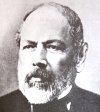 |
|
professor at the University of Stuttgart who traveled and collected in South Africa. He worked as an apothecary’s apprentice and a pharmacist, and then undertook the study of mineralogy, zoology and chemistry at Tübingen and Heidelberg, where he received a doctoral degree in 1836. The German-born pharmacist, businessman and patron of the natural sciences Carl Ferdinand Heinrich von Ludwig, who had started the first botanical garden in Cape Town, visited Germany and persuaded Krauss to come to South Africa, which he did arriving in May, 1838. He quickly began |
studying the fauna, flora and geology of Cape Town and its environs and collecting molluscs and crustaceans, marine algae and fish. By oxcart and horse he went to Kogmanskloof, Walker Bay, Cape Agulhas, Swellendam, the Outeniqua Mountains and Oudtshoorn, Mosel Bay, Knysna, the Olifants River and the Swartberg, Uitenhage, Port Elizabeth and the Karoo, Pietermaritzburg, and many other locations, finally reaching Port Natal where he sailed back to Cape Town. With several other people he conducted the first significant biological exploration of Natal. He had collected 2,308 species (mostly flowering plants) of which 340 species and 34 genera were new to science. He left Cape Town in April, 1840 with 16 crates of his collected material, stopping in England on the way and selling 500 specimens to the British Museum. Back in Stuttgart, he was appointed to the Natural History Museum and became director in 1856. Krauss' specimens are lodged with the British Museum, University of Cambridge, Royal Botanic Garden, Edinburgh, Museo di Storia Naturale di Firenze, Conservatoire et Jardin botaniques de la Ville de Geneve, Biozentrum Klein-Flottbek, and many more herbaria. In 1844 he was instrumental in the founding of the Association for National Natural History in Württemberg. Another position he held was overseer and professor at the Royal Natural History Cabinet in Stuttgart, and became its director in 1890. He was elected a member of the Leopoldina in 1847 and in 1880 he was knighted. He died in Stuttgart.
- kraut'teri: named for Louis C. Krautter, Jr. (1880-1909), an American botanist and specialist in the Plantaginaceae. He was born at Philadelphia and received a BS in biology in 1902 from the University of Philadelphia. He was an assistant professor of botany at the University of Pennsylvania when he died of exposure and was found frozen to death on a bank at Swayne's Channel. Another man who was with him, Ernest J.McFarlane, was also frozen to death. It was stated that McFarlane, only 19, had fallen overboard from a skiff they were in, and Krautter had died after repeated efforts to bring his body ashore. An article in the Philadelphia Inquirer lists him as having had a PhD. The taxon Pachystima krautteri was published by Edith May Farr in 1906 and in her publication in the Ottawa Naturalist she says that she chose the name because specimens were collected by Mr. Louis Krautter near Black Butte, Siskyou County. A note in the Transactions and Proceedings of the Botanical Society of Pennsylvania, Vol. 2, 1911, says: "Mr. Louis Krautter grave a graphic account of a botanical trip made through California during the past summer. He passed through the southern dry portion of the state northward to the region around Mt. Shasta, and concluded with a brief description of the flora around Lake Tahoe." And the same source includes this: "Mr. Louis Krautter gace a microscopic demonstration of dividing cells in the tissues of root tips of various plants." Clearly, his death was a loss to the botanical world. He was apparently baptized as Christian Ludwig Krautter, the same as his father's name listed on baptismal record.
-
kruckeberg'ii: named for Arthur Rice Kruckeberg (1920-2016), an American botanist who earned
his PhD in botany
 |
|
from the University of California at Berkeley in
1950. Immediately after earning his degree he moved to Seattle
from his native California to teach at the University of Washington.
So began his lifelong pursuit of northwest flora and ecology.
In 1982, Dr. Kruckeberg published Gardening with Native Plants
of the Pacific Northwest: An Illustrated Guide, the preeminent
work for local gardeners wishing to integrate native plants into their
home gardens. Later he wrote The Natural History of Puget Sound
Country, an outstanding work covering the geology, botany, history, |
climate, and ecology of the Puget Sound and the impact human settlement
has had on the bioregion. He also wrote California Serpentines:
Flora, Vegetation, Geology, Soils, and Management Problems and Geology and Plant Life: The Effects of Landforms and Rock Types
on Plants, and as recently as this year, published Washington's
Best Wildflower Hikes. Dr. Kruckeberg stayed involved with the
University's botany department as professor-emeritus and with the Washington
Native Plant Society, an organization he co-founded. The garden
that he and his late wife Mareen established in Shoreline has become
the Kruckeberg Botanic Garden.
He also finds time to play the bassoon with an informal woodwind
quintet, the Phoni Ventorum. The following is from a website
by the University of Washington department of biology: "Arthur
Rice Kruckeberg, born 21 March, 1920 in Los Angeles, fell in love
with the plant world at an early age. He immersed himself in
local flora and ornamental plants for gardens all during his school
years. After earning his bachelor of arts degree with honors
(Phi Beta Kappa initiate) at Occidental College in 1939, he began
graduate studies in botany at Stanford University. World War
II intervened and Art became a Japanese language officer in the U.S.
Navy. All during the war years, Art found opportunities to pursue
studies of plant life in the Pacific theatre (Hawaii, the Mariannas,
the Philippines, and in Japan). After the war, with the aid
of the G.I. Bill, Art earned his PhD degree at the University of
California (Berkeley) in 1950; his thesis on serpentine ecology and
evolution started him on 50 years devotion to the ecology of serpentines
and other “kooky” habitats worldwide. So in 1950,
Art began his 50 years tryst with the University of Washington, starting
as a lowly instructor and finally as emeritus professor of botany
in 1989. During this long career at UW, Art devoted himself
to a variety of endeavors. He taught general botany and biology, plant
evolution, and a course in ornamental plants. He served as chair of
botany for seven years (1971-1977) and carried on research in plant
ecology and evolution, with many publications on these topics. Public
service has been an important part of his career: adult education
(field trips, lectures, short courses), published articles for the
general public and a strong commitment to regional conservation. In
the latter arena, he aided the state in establishing a Natural Area
Program, served on boards of The Nature Conservancy and other conservation
groups. Art was a co-founder in 1976 of the Washington Native
Plant Society. Besides numerous research papers, he has written
several books, all of which are in reach of the general public. Art’s
passion for plants is seen in his four-acre home garden, now incorporated
and preserved as the Kruckeberg Botanic Garden, in Shoreline, Washington.
With his wife Mareen, the garden has become an outstanding botanical
collection and have great aesthetic value to the community."
(Photo credit: Madroño)
- Krynitz'kia: named for Ivan Andreevich Krinitski (Krynitsky) (1797-1838), a Russian zoologist and professor at
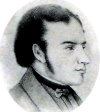 |
|
Kharkov University. He was born in Zvenigorodsk, Kiev province, and studied at the Uman Gymnasium. In 1821 he graduated from Vilnius University, the oldest university in the Baltic states, and then traveled with Professor S.B. Jundzillo in that region for natural history research. He was appointed to teach agriculture at the University in 1923 and then transferred to Kharkov University, publishing a number of works on entomology and mineralogy. He was appointed adjunct professor in 1826 and by 1835 was a full professor. He traveled across the Caucasus |
region and fell ill with a fever, and due to the absence of medical facilities, his disease was fatal. He made many discoveries in entomology, and discovered more than 70 species of previously completely unknown slugs. He has some insects and at least one species of bird named for him. He was a member of the scientific societies of Jena, Heidelberg and Dresden. The genus Krynitzkia was published by Friedrich Ernst Ludwig von Fischer and Carl Anton von Meyer in 1841.
- Kuhnio'des/Kuhnis'tera: named for Adam Kuhn (1741-1817), an American physician and well-known botanist who
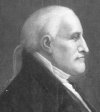 |
|
studied under Carl Linnaeus. He was born in Germantown, Pennsylvania, near Philadelphia of a German father and grandfather. Kuhn’s father had came to Philadelphia in 1733 as a successful doctor and moved to Lancaster to become a magistrate and an elder of the Lutheran Church. Adam studied medicine first with his father and then in 1761 went to Sweden to study botany as the only American student of Linnaeus at the University of Uppsala until 1764. He then went to London for a year, following which he went to Edinburgh where he earned the degree of doctor of medicine |
in 1767. After visiting France, Holland and Germany he returned to America in 1768 where he was appointed professor of materia medica and botany in the medical department of the College of Philadelphia, the first faculty of medicine in the thirteen colonies. This was a position which he held until 1789, when he was made professor of the theory and practice of medicine. In 1791 the College of Philadelphia and the University of the State of Pennsylvania merged and became the University of Pennsylvania, and he maintained his position until his retirement in 1797. From 1775 until 1798 he was was a physician of the Pennsylvania Hospital. He was one of the founders of the College of Physicians of Philadelphia, the first of its kind in America, in 1787, and was its president from July, 1808, until his death. Although there is no evidence that he actually treated George Washington, he was considered his family physician and the leading physician in Philadelphia. One of his students, Valentine Seaman, mapped yellow fever mortality patterns in New York and introduced the smallpox vaccine to the United States in 1799. He died in Philadelphia at the age of seventy-six. The genus Kuhniodes was published in 1903 by George Edward Post and Carl Ernst Otto Kuntze, and the genus Kuhnistera was published in 1792 by Jean Baptiste Antoine Pierre de Monnet de Lamarck.
-
Kumlien'ia: named for Thure Ludwig Theodor Kumlien (1819-1880). The following
is quoted from a website of the
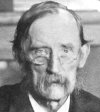 |
|
Wisconsin
Historical Society: "Pioneer ornithologist and naturalist,
born Hertorp, Sweden. He attended Uppsala University, but left school
in his senior year (May, 1843) to migrate to the U.S. He came to Wisconsin
the same year, and settled at Lake Koshkonong. In that area he collected
a vast number of natural-history specimens, especially birds and birds'
eggs, and sold them to leading collectors and natural history museums.
For a number of years he was employed by the state of Wisconsin to
arrange collections for the state normal schools and the university. He was professor |
of botany and zoology at Albion Academy (1867-1870),
and when the Wisconsin Natural History Society was organized in 1881
he was engaged as taxidermist and conservator of its collections.
In 1883 the collections were transferred to the Milwaukee Public Museum,
and Kumlien served in the same capacity with that organization until
his death. Reluctant to publicize either himself or his work, Kurnlien
seldom presented detailed notes or journals to the scientific world.
He maintained a correspondence of wide scope, however, and most of
his findings are contained in letters to his many friends in the scientific
world." The genus Kumlienia was published by Edward Lee Greene in 1886.
- kunth'ii: named for Karl Sigismund Kunth (1788-1850), a German botanist known for being one of the first to study,
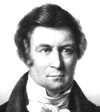 |
|
describe and categorize plants from the Americas, publishing Nova genera et species plantarum quas in peregrinatione ad plagam aequinoctialem orbis novi collegerunt Bonpland et Humboldt (7 vols., Paris, 1815–1825). He was born in Leipzig and became clerk to a merchant in Berlin in 1806. He met Alexander von Humboldt who helped him attend lectures at the University of Berlin at which time he became interested in botany. From 1813 to 1819 he worked as Humboldt’s assistant in Paris, organizing and classifying the plant collections compiled by Humbolt and Aimé Bonpland |
when they traveled through the Americas. Kunth returned to Berlin in 1820 and became professor of botany at the University of Berlin, as well as vice-president of the botanical garden. In 1829, he was elected member of the Academy of sciences of Berlin. In 1829 he went to South America and over the course of three years visited Chile, Peru, Brazil, Venezuela, Central America and the West Indies. The Prussian government acquired his plant collection following his death in 1850 and it later formed part of the royal herbarium in Berlin.
- kunz'ei: named for Richard Ernst Kunze (1839-1919), a physician and botanist. He was born in Altenburg, Germany, and was a physician. The following is quoted from Wkipedia: "He came to the United States in 1854, and was graduated at the Eclectic Medical College of New York in 1868, subsequently becoming a member of the board of trustees of this institution, was president of the New York Therapeutical Association in 1880, introduced to the medical profession various drugs derived from cacti, and added greatly to the previous knowledge of medical botany. He published a series of monographs on Cactus (1875); Cereus Grandiflorus and Cereus bonplandi (1876); Cereus triangularis and Phyllocactus grandis (1876); Cardinal Points in the Study of Medical Botany (1881); and The Germination and Vitality of Seeds (1881). In 1900, he was collecting cacti, mainly around Phoenix, Arizona, for the Haage nursery. At least two species of cactus were named after him, Grusonia kunzei and Mammillaria kunzeana. He also wrote a paper on medical entomology."
- Kun'zia: named for Gustav Kunze (1793-1851), a German physician and professor of zoology, and a bryologist,
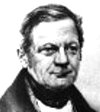 |
|
entomologist, and botanist with an interest mainly in ferns and orchids. He was born in Leipzig and enrolled in the University of Leipzig in 1813, receiving his doctorate in medicine in 1819. While undertaking his studies, he went on scientific excursions throughout Germany, and published his results in 1817 in Volume 1 of the "Mycological booklets." In 1815 he was writing articles about sponges. Such was his reputation that from 1817 he was a member of the Wernerian Natural History Society in Edinburgh, from 1818 a member of the Regensburg Botanical Society, and from |
1819 a member of the Society of Natural Scientists in Moscow. Later he belonged to over 20 other scientific societies in Germany, France, Belgium, Sweden and Italy. He was accepted into the Leopoldina in 1820. In 1818 he was co-founder of the Naturalist Society in Leipzig, and in 1822 he became an associate professor of medicine and a few years later curator and librarian at the United Gehlerschen Medicin Library in Leipzig. He became an associate professor at the University of Leipzig in 1835 and a full professor of botany in 1845. From 1837 he was appointed director of the botanical garden of the University of Leipzig. In 1851 he was elected a foreign member of the Royal Swedish Academy of Sciences. The major focus of his botanical research was on ferns and between 1840 and 1851 he published the two-volume Die Farnkräuter in kolorirten Abbildungen naturgetreu erläutert und beschreiben (The ferns in colorized illustrations true to nature and described), one of the first detailed classification of the cryptogams. He also conducted entomological studies and published monographs on beetles. The genus Kunzia was published by Curt Sprengel in 1825. The Australian plant genus Kunzea was also named for him.
- kurabayash'ii: named for Masataka Kurabayashi (?-1963), a scientist well-known for his work on cytology and population genetics and affiliated for a time with the University of California, Los Angeles.
- Kur'zia: named for Wilhelm Sulpiz Kurz (1834-1878), a German botanist and garden director in Bogor, West Java and Kolkata. He was born in Augsberg, Bavaria. His father died in 1842 and he and his mother moved to Munich where he attended school. He then entered Munich University where he studied under Carl Friedrich Philipp von Martius, renowned for his botanical exploration of Brazil. An entry in the JSTOR website provides the following information: “Having fallen out with his family, Kurz left Germany in 1854 and began working as an apothecary in Delft, Holland. He then joined the medical services of the Dutch East Indies Army (Koninklijk Nederlands Indisch Leger, KNIL) in 1856, going under the false, more Dutch-sounding name of Johann Amann. Arriving in Batavia in September, 1856, he was stationed in Bangka and Celebes (Sulawesi), taking the opportunity to collect plants widely. Returning to Batavia in 1859, Kurz's keen interest in botany was recognized by his superiors and he was appointed to a position in the botanic gardens at Buitenzorg (Bogor), assisting Johannes Teijsmann with plant identification. Here he met Thomas Anderson, superintendent of the Royal Botanic Garden, Calcutta, who persuaded Kurz to leave Buitenzorg in late 1863 and sail to British India, where he began work as herbarium curator the following year. Kurz's most productive period was spent here at the Sipbur gardens, in terms of collecting and publishing his research. Kurz had made collections in Singapore on his way to India in 1863 and over the coming years was frequently dispatched to gather more plants in Southeast Asia. He spent three months on the Andaman Islands in 1866 and made two expeditions to Burma (Myanmar) in 1867-1868 and 1870-1871. His most important work, the two-volume Forest Flora of British Burma (1877), resulted from these sojourns. Suffering ill health, Kurz took a leave of absence in late 1877 to tour Burma and the Straits Settlements. He was not to return to Calcutta, however, for he died in Pulo-Penang in January 1878 of a fever and an abscess on his thigh. He published more than 60 reports and papers during his lifetime, many of which appeared in the journal of the Asiatic Society of Bengal (he was a member from 1869). He also published in the Journal of Botany and in Flora. Kurz was usually known familiarly by his middle name, Sulpiz, as well as by his pseudonym, Johann Amann, sometimes misspelt Amand.” The genus Kurzia was published by Georg Matthias von Martens in 1870.
-
kusch'ei: named for John August Kusche (1869-1934). The following
is from Cantelow & Cantelow in Leaflets of Western Botany,
1957: "Natural history collector, particularly in entomology.
Born in Germany in 1869, died in San Francisco, Calif., 3 Mar. 1934.
Made extensive collections in remote South Pacific and Arctic regions,
Alaska, Arizona, Hawaiian Islands, and elsewhere; contributed many
valuable specimens to collections at Univ. Calif., Berkeley, Calif.
Acad. Sci., and other museums." He came to the U.S. in 1886 and
was employed for a number of years as a gardener and then as naturalist
at a sanatorium.
-
Kyhos'ia: named by Bruce Baldwin for Donald William Kyhos (1929-2022) of the department of botany at UCLA. Berkeley and professor emeritus at UC Davis. He received his doctorate from the University of California at Los Angeles. He worked with Dr. Baldwin in the late 1980s on the Madia species called silversword in Hawaii, showing that it was closely related to the California tarweeds. In addition to the United States, he has also collected in Mexico. The genus Kyhosia was published by Bruce Baldwin in 1999.
-
Kyllin'ga: named for Danish botanist Peder Lauridsen Kylling (1640-1696).
The following is an English translation of an essay by E. Rostrup
in the Danish Biography Lexicon, Vol. 9, on a website of Project
Runeberg: "Born in Assens, Denmark, Kylling was the son of
Alderman Laurids Kylling (d. 1662). He completed his high school studies
in 1660 and earned his degree in divinity in 1666. A few years later,
he was ordained as a priest, but for unknown reasons his ordination
was immediately canceled. Because of this, Kylling dedicated himself
to his botanical studies with great zeal and continued to do so right
until his death. The botanist J.W. Hornemann, who was the most competent
judge of men, said about Kylling 'this excellent man was without a
doubt the most thorough, dedicated, and most experienced of botanists
in Denmark until the age of Rottbøll.' In 1680, he was granted
free residence at the Valkendorf College Dormitory on the condition
that he restore and tend the garden - with the later additional condition
that he 'take the students into the fields in the summer'. He then
received special permission to live at the College for 16 years, until
his death. In 1682, his patron Privy Councilor Moth had him appointed
a royal botanist with an annual salary of 300 rix-dollars, which was
a considerable sum in those days. His most famous work, Viridarium
Danicum, was published in 1688 and contains an alphabetical list
of all Danish plants known at the time with their localities in the
different parts of the country, although mostly on the islands. Henrik
Gerner and Peder Syv were among the well-known men mentioned in the
foreword who provided Kylling with information about the plants. The
publication was later (in 1757) systematized by Jørgen Tyche
Holm and critically treated (in 1859) by Morten Thomsen Lange. In
1889 Rudolf J.D. von Fischer-Benzon performed a critical study of the
species from Schleswig. Kylling himself worked on a new expanded edition,
but it was never published. It is said that the famous German botanist
Haller kept the manuscript that Kylling intended to print in his library.
Another, shorter, work by Kylling was published in 1684 under the
name Gyldenlund ('Golden Grove'), containing a list of 404
plants observed by him in Gyldenlund (the present-day Charlottenlund
north of Copenhagen). It was the first Danish compilation of special
flora. The exactness and completeness of the work makes it especially
interesting because one can compare the composition of present day
flora with what it was then. Kylling’s contemporaries regarded
him as a bit eccentric - and one joking tribute refers to him as 'a
funny old fogey'. This was mainly because he lived at the College
his whole life and remained unmarried, and because of his quiet, unassuming
lifestyle, and his love of working in the garden and wandering about
in the fields. Kylling had many enemies and he himself complained
that when his Viridarium was being printed, one jealous hand
had removed the letter 'n' from the title 'Urtekonstens Mester' ('Master
of the Herbal Arts') in Henrik Gerner’s introduction so that
it read 'Urtekostens Mester' ('Master of the Nosegay') instead. The
introduction was placed in the beginning of the book according to
the custom of that time. Christen Friis Rottbøll named a plant
species in his honor [in 1773]." The genus Kyllinga was published in 1982 by Kaare Arnstein Lye.
|
